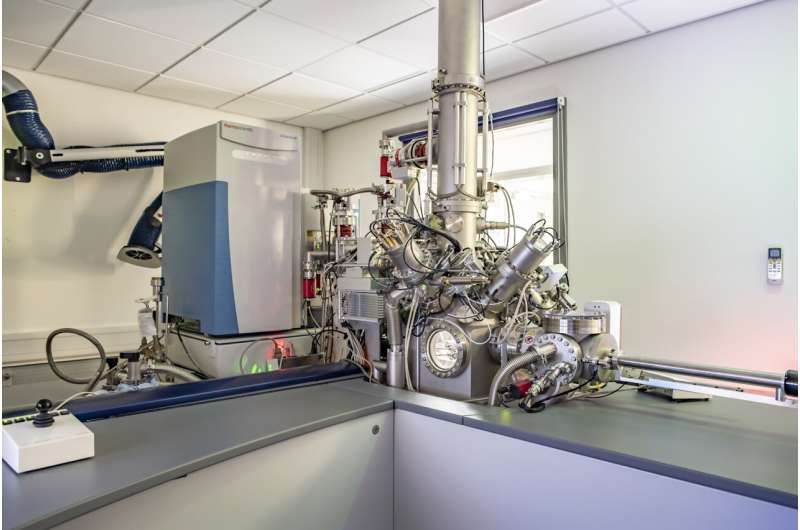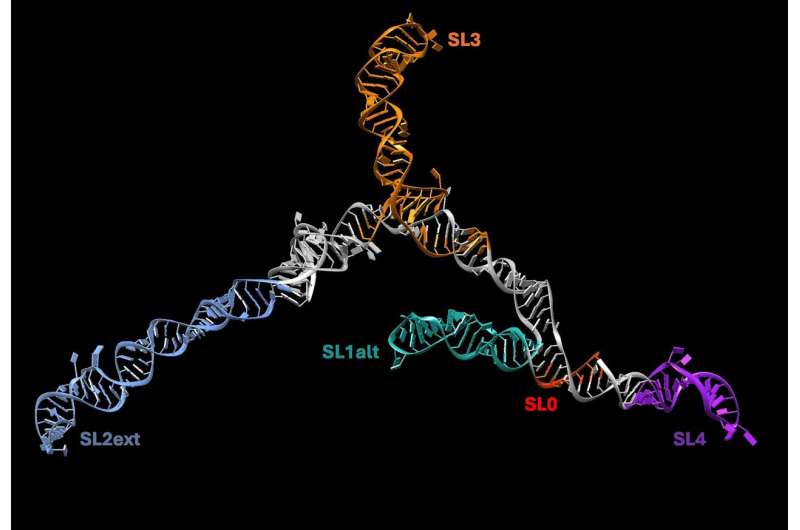This article has been reviewed according to Science X's editorial process and policies. Editors have highlighted the following attributes while ensuring the content's credibility:
fact-checked
peer-reviewed publication
trusted source
proofread
Scientists develop technique to analyze RNA structures in ultra-high definition

Scientists at the University of Nottingham have developed a technique to analyze the atomic-level structure of RNA molecules with exceptional precision and speed, and are the first in the world to use the method to examine structural changes in RNA when a cell gets infected with HIV.
The findings, which are published in Nature Communications, could have far-reaching implications for the treatment of various diseases where RNA plays a critical role and for development of therapeutics such as mRNA vaccines.
RNA, a close cousin of DNA, plays a critical role in various biological processes, from protein synthesis to gene regulation. However, unlike the DNA's well-known double-helix structure, RNA folds into complex shapes that are incredibly difficult to analyze using traditional techniques.
This is where the Nottingham team, led by Dr. Aditi Borkar, Assistant Professor in Molecular Biochemistry & Biophysics in the School of Veterinary Medicine and Science, has achieved a transformative feat.
Dr. Borkar developed a powerful method that combines a cutting-edge mass spectrometry technology called cryogenic OrbiSIMS—a unique imaging capability of the University, with advanced computational modeling and automation. This combination enabled the team to analyze attomole quantities of RNAs and determine their 3D structures at par with industry standards, in a matter of days.

This innovative approach promises significant advancements in the scope, accuracy, and speed of RNA structural biology and will accelerate the development of RNA-based therapeutics.
Dr. Borkar said, "RNAs are one of the most difficult molecules to study via structural biology. OrbiSIMS is at least 1,000-times more sensitive for studying RNAs compared to other structural techniques typically used in our field.
"With our OrbiSIMS guided pipeline, we can now determine RNA structures in a matter of days, instead of months. This incredible sensitivity and speed will now help us to study previously intractable targets within narrow drug development timeframes."
The OrbiSIMS instrument was developed at the National Physical Laboratory, UK in consultation with GSK. Nottingham was the first University in the world to own and operate the OrbiSIMS instrument.
More information: Shannon Ward et al, Integrating cryo-OrbiSIMS with computational modelling and metadynamics simulations enhances RNA structure prediction at atomic resolution, Nature Communications (2024). DOI: 10.1038/s41467-024-48694-3
Journal information: Nature Communications
Provided by University of Nottingham





















